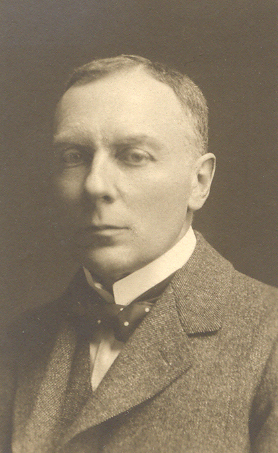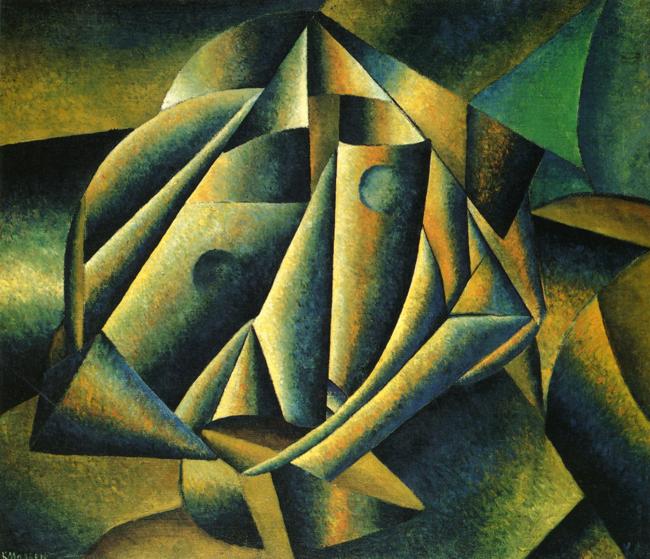 Lewis was reputedly born on his father's yacht off the Canadian province of Nova Scotia
Lewis was reputedly born on his father's yacht off the Canadian province of Nova Scotia His British mother and American father separated about 1893.His mother subsequently returned to England,
His British mother and American father separated about 1893.His mother subsequently returned to England,  where Lewis was educated, first at Rugby School, then at the Slade School of Art,
where Lewis was educated, first at Rugby School, then at the Slade School of Art,Mainly residing in London from 1908, Lewis published his first work (accounts of his travels in Brittany) in
 s The English Review in 1909. He was an unlikely founder-member of the Camden Town Group in 1911.The members of the Camden Town Group included Walter Sickert, Harold Gilman, Spencer Frederick Gore
s The English Review in 1909. He was an unlikely founder-member of the Camden Town Group in 1911.The members of the Camden Town Group included Walter Sickert, Harold Gilman, Spencer Frederick Gore , Lucien Pissarro
, Lucien Pissarro (the son of French Impressionist painter Camille Pissarro)
(the son of French Impressionist painter Camille Pissarro) , Wyndham Lewis, Walter Bayes
, Wyndham Lewis, Walter Bayes , J.B. Manson
, J.B. Manson , Robert Bevan
, Robert Bevan , Augustus John
, Augustus John , Henry Lamb
, Henry Lamb , and Charles Ginne
, and Charles Ginne In 1912 he exhibited
In 1912 he exhibited  his Cubo-Futurist
his Cubo-Futurist  illustrations to Timon of Athens (later issued as a portfolio, the proposed edition of Shakespeare's play never materialising) and three major oil-paintings at the second Post-Impressionist exhibition. This brought him into close contact with the Bloomsbury Group, particularly Roger Fry
illustrations to Timon of Athens (later issued as a portfolio, the proposed edition of Shakespeare's play never materialising) and three major oil-paintings at the second Post-Impressionist exhibition. This brought him into close contact with the Bloomsbury Group, particularly Roger Fry and Clive Bell,
and Clive Bell, with whom he soon fell out. In 1912 he was commissioned to produce a decorative mural, a drop curtain, and more designs for The Cave of the Golden Calf, an avant-garde cabaret and nightclub on London's Heddon Street.
with whom he soon fell out. In 1912 he was commissioned to produce a decorative mural, a drop curtain, and more designs for The Cave of the Golden Calf, an avant-garde cabaret and nightclub on London's Heddon Street.The Cave of the Golden Calf was a night club in London. It opened in an underground location at 9 Heddon Street, just off Regent Street,
 in 1912 and became a haunt for the wealthy, aristocratic and bohemian. Its creator Frieda Strindberg (Frida Uhl)
in 1912 and became a haunt for the wealthy, aristocratic and bohemian. Its creator Frieda Strindberg (Frida Uhl) set it up as an avant-garde and artistic venture.
set it up as an avant-garde and artistic venture.
It introduced London to new concepts of nightlife and provided a solid model for future nightclubs. Philip Hoare above in his book, Oscar Wilde's Last Stand, provided the following description:

"Up in Regent Street young men wearing tight suits and nail varnish were sipping creme de menthe in the Cafe Royal, while down a dark cul-de-sac lurked a new and devilish sort of place where Futurists cavorted: a `night club' profanely named `The Cave of the Golden Calf'. Vague rumours had reached her that nowadays, the backstreets harboured all manner of such places, attended by members of the social elite. Such intimations confirmed all the suspicions of her class. At the root of these evils lay the name of Oscar Wilde, still unspoken in polite households. He may have been dead for more than a decade, but Wilde's decadence endured."
The club is also compared with the parties of The Coterie, a group of young aristocrats and intellectuals in London:
The Cave went bankrupt in 1914, but its name lived on, and recently inspired a show at the Edinburgh Fringe and the 2010 Commemoration Ball at New College, Oxford"Their hedonism was not confined to private parties. In 1912, Madame Strindberg [...] leased a draper's basement in Heddon Street, a cul-de-sac behind Regent Street, and created the Cave of the Golden Calf. This `low-ceilinged nightclub, appropriately sunk under the pavement', was decorated by Spencer Gore in Russian Ballet-inspired murals, with contributions by Jacob Epstein and Wyndham Lewis; Eric Gilldesigned the club's motif, a phallic Golden Calf, symbol of biblical dissipation and idolatry. Here the cult of Wilde could continue to worship. The club's self-advertised aim was to be `a place given up to gaiety', its art-subversive interiors `brazenly expressive of the libertarian pleasure principle ...' [...]"The Coterie was a fashionable and famous set of English aristocrats and intellectuals of the 1910s, widely quoted and profiled in magazines and newspapers of the period. It adopted the hostile description as a "corrupt coterie".
Many were the children of The Souls.Its members included: Lady Diana Manners,
the most famous beauty in England; Duff Cooper
who became a Conservative politician and a diplomat; Raymond Asquith
, son of the Prime Minister and a famed barrister; Maurice Baring; Patrick Shaw-Stewart, a managing director of Barings Bank and war poet; Nancy Cunard
and her friend Iris Tree; Edward Horner and Sir Denis Anson. World War I destroyed the original Coterie, taking the lives of Horner, Shaw-Stewart and Asquith.
 The building became a post office and can be seen in the background of the cover of David Bowie's
The building became a post office and can be seen in the background of the cover of David Bowie's album The Rise and Fall of Ziggy Stardust and the Spiders from Mars. The site is now occupied by a bar, The Living Room W1.
album The Rise and Fall of Ziggy Stardust and the Spiders from Mars. The site is now occupied by a bar, The Living Room W1.
No comments:
Post a Comment